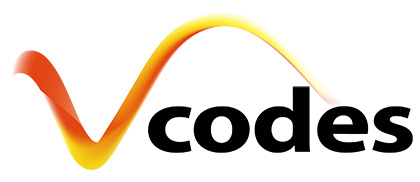Video content is one of the most popular and engaging forms of media today. Whether it is for entertainment, education, marketing, or communication, video content can convey messages and stories in a powerful and captivating way. However, not everyone can access or enjoy video content equally. Some people may face barriers such as language differences, hearing impairments, or environmental noise that prevent them from fully understanding or appreciating the audio of a video. That is why subtitles and closed captions are essential features that can make video content more accessible and inclusive for a wider audience.
What are Subtitles and Closed Captions?
Subtitles and closed captions are both types of text that appear on the screen to provide additional information about the audio of a video. However, they have different purposes and characteristics.
Subtitles are a translation of the dialogue or narration of a video into another language. They are mainly used by viewers who do not speak or understand the language of the audio. Subtitles usually only include speech and do not indicate who is speaking or other sounds that may be relevant to the context.
Closed captions are a transcription of all the audio elements of a video into the same language. They are mainly used by viewers who are deaf or hard of hearing, or who have difficulty hearing the audio due to background noise or low volume. Closed captions include not only speech, but also sound effects, music, speaker identification, and other non-speech information.
Both subtitles and closed captions can be either open or closed. Open subtitles or captions are permanently embedded into the video and cannot be turned off by the viewer. Closed subtitles or captions can be toggled on or off by the viewer using a button or a remote control.
Why are Subtitles and Closed Captions Important?
Subtitles and closed captions have many benefits for both viewers and content creators. Here are some of them:
- Accessibility: Subtitles and closed captions make video content accessible to people who have hearing impairments or who speak different languages. They allow them to follow along with the audio and understand the message and the story of the video. According to the World Health Organization, about 466 million people worldwide have disabling hearing loss, and about 2 billion people speak English as a second language. Subtitles and closed captions can help these people enjoy video content without missing out on any information or emotion.
- Comprehension: More and more people today watch content with subtitles on. Subtitles and closed captions also enhance comprehension for viewers who can hear the audio but may have difficulty understanding it due to various factors. For example, subtitles and closed captions can help viewers who have trouble keeping up with fast-paced conversations, who have unfamiliar accents, who have low literacy skills, or who have cognitive impairments. Subtitles and closed captions can also help viewers who watch videos in noisy environments, such as public places, workplaces, or classrooms. By providing visual cues and reinforcement, subtitles and closed captions can improve retention and recall of the information presented in the video.
- Engagement: Subtitles and closed captions can also increase engagement for viewers who watch video content online or on social media platforms. Many viewers tend to watch videos on their mobile devices with the sound off, either by choice or by necessity. According to a study by Facebook, 85% of videos on its platform are watched without sound. By adding subtitles or closed captions to videos, content creators can capture the attention of these viewers and encourage them to watch longer and interact more with the video. Subtitles and closed captions can also boost SEO (search engine optimization) for videos, as they provide keywords and metadata that can help search engines index and rank videos more accurately.
- Inclusion: Subtitles and closed captions can also promote inclusion and diversity for viewers who watch video content from different cultures and backgrounds. By providing translations or transcriptions of different languages, dialects, accents, or slang terms, subtitles and closed captions can help viewers appreciate the richness and diversity of human communication. Subtitles and closed captions can also help viewers learn new languages or improve their language skills by exposing them to authentic speech patterns and vocabulary.
Subtitle Files Conversion and Insertion in Video Processing Workflows
Subtitle files are text files that contain the dialogue or narration of a video in a specific language and format. They are usually accompanied by time codes that indicate when the text should appear and disappear on the screen. Subtitle files can be used to provide translations or transcriptions of the audio of a video for different audiences and purposes.
However, subtitle files are not always compatible with the video formats or platforms that are used by broadcast and streaming services. Therefore, subtitle files may need to be converted or inserted into the video files as part of a video processing workflow. This can involve various steps and tools, depending on the source and target formats, the quality and accuracy requirements, and the automation and integration needs.
Subtitle files conversion is the process of changing the format or structure of a subtitle file to make it compatible with a different video format or platform. For example, a subtitle file in PAC format may need to be converted to TTML format to be used with an MXF video file, or a subtitle file in STL format may need to be converted to WebVTT format to be used with an HLS stream.
Subtitle files conversion can also involve changing the frame rate, the character encoding, the time codes, the line breaks, the punctuation, the spelling or the grammar of the subtitle file to match the specifications or standards of the target format or platform.
Subtitle files insertion is the process of embedding or adding subtitle data into a video file or stream to make it available for display on different devices or players. For example, a subtitle file in TTML format may need to be inserted into an MXF video file as a SMPTE 436M data track, or a subtitle file in WebVTT format may need to be added to an HLS stream as a separate text track.
Subtitle files insertion can also involve adjusting the timing, positioning, styling or rendering of the subtitle data to match the preferences or requirements of the target device or player.
The Vcodes vCoder software handles all this automatically as part of its media processing workflows.


